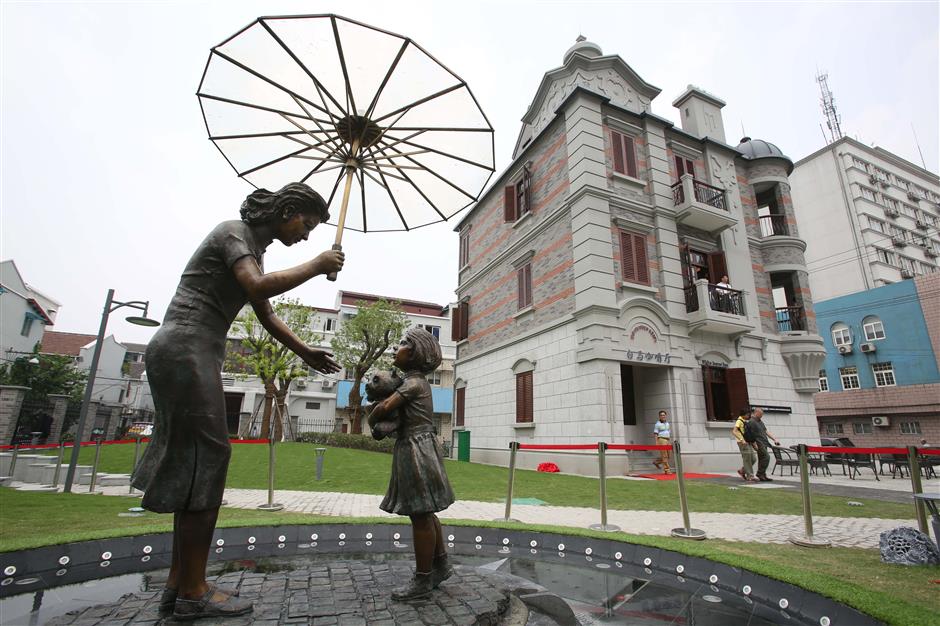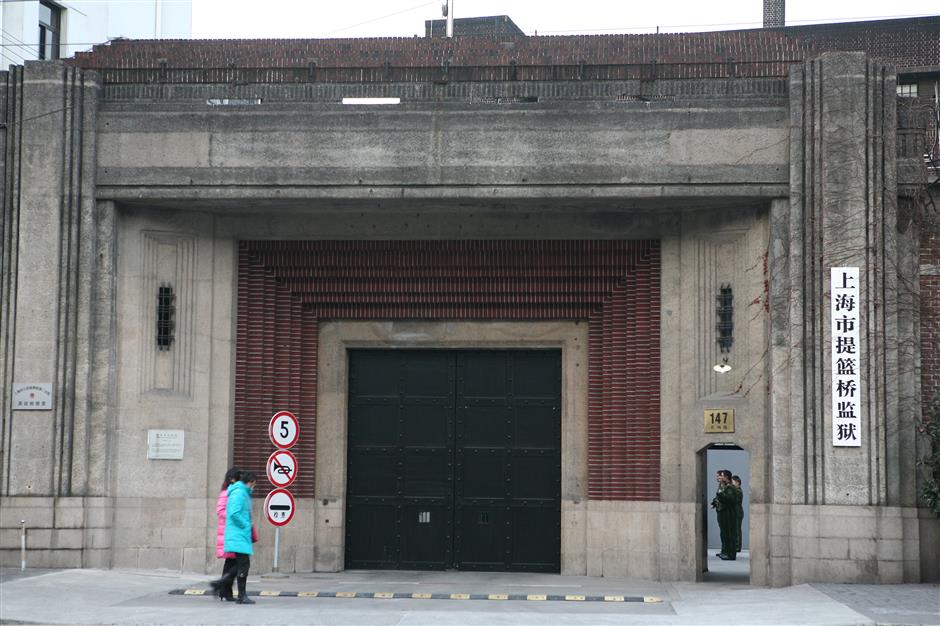Historic Tilanqiao to merge with North Bund subdistrict

A statue in front of the White Horse Cafe in Tilanqiao area where Shanghai's Jewish residents would gather for festivals and other community activities.
The historic Tilanqiao subdistrict in Hongkou District, along with part of Sichuan Road N. subdistrict, is being merged with the newly formed North Bund subdistrict that has been specifically created to develop the Huangpu River waterfront.
The city government has asked Hongkou District to protect the historical and cultural identity of Tilanqiao, which is listed as a city-level heritage conservation area.
A new neighborhood committee under the new subdistrict will be named Tilanqiao, the city government said.
Subdistrict is one of the smallest administrative divisions in China. It is almost a township-level division and is typically part of a larger urban area. In general, urban areas are divided into subdistricts, which are sub-divided into several residential communities or neighborhood committees.

Ships are docked along the North Bund area along the Huangpu River.
Tilanqiao's claim to fame was because of Tilanqiao Prison, formerly known as the Ward Road Gaol, which was built in 1903 and once was the largest prison in East Asia.
However, the history of Tilanqiao, or the “Basket-carrying Bridge” dates back to Qing Dynasty (1644-1911). People visiting the ancient Xiahai Temple would cross a stone bridge, carrying baskets filled with flowers, offerings and joss sticks, thereby earning the name Tilanqiao.
The area was later developed into a prosperous region after the opening up of the Shanghai Port in 1845. Many British and American businessmen began settling down in the area due to its proximity to the ports on the Huangpu River.
The area accommodated most of the 23,000 Jewish refugees who arrived in the city between 1933 and 1941 to escape the Nazis during the World War II. They lived in lane-style residential houses near Huoshan Road.

The former Tilanqiao Prison was built in 1903 and was once the biggest jail in East Asia.
The region became a transport hub in the 1950s because half of the city’s first six trolley lines were built in the area, along the current Dongdaming and Dongchangzhi roads.
The Tilanqiao district was merged with Hongkou in 1956.

Former Jewish refugees in Shanghai visit their old residential community on Huoshan Road in Tilanqiao.
The key historical sites in the area include the Ohel Moishe Synagogue within the Shanghai Jewish Refugees Museum, the rebuilt White Horse Café, a former gathering place of Jewish residents, the Tilanqiao Prison, the historic Huoshan Park that was built in 1917 as well as the former site of the Joint Distribution Committee that offered financial assistance to the Jewish refugees during the World War II.















